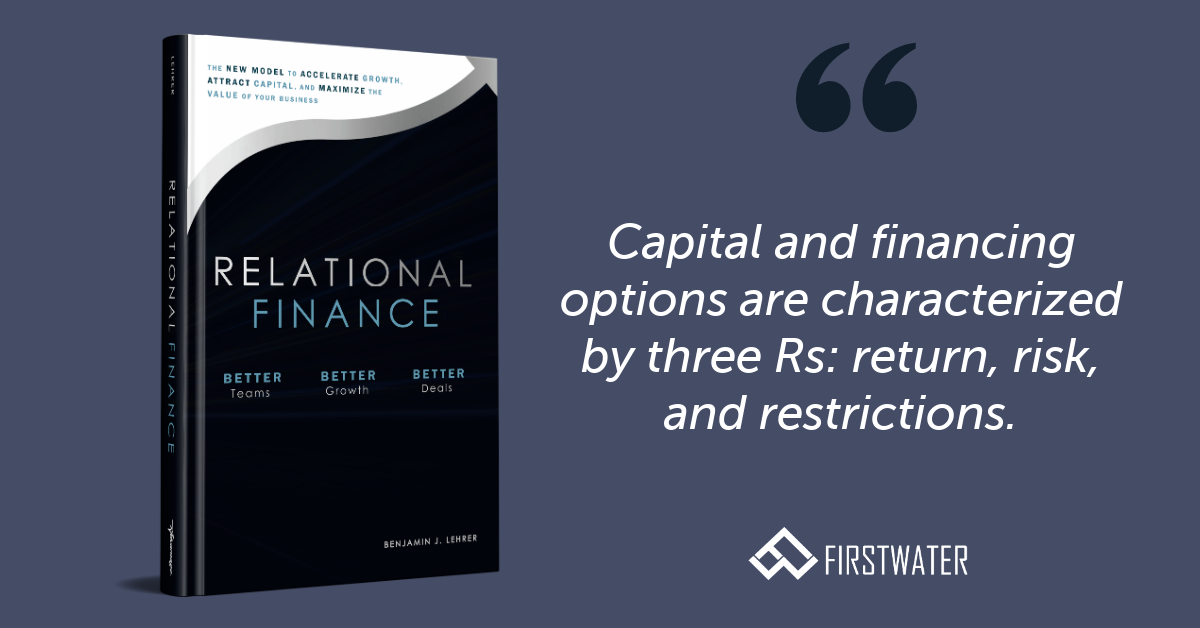The key to capital raising is getting the right people on the other side of the table, and then winning them over.
The best way to do both is to understand the three Rs of capital: return, risk, and restrictions. Critically, this means being able to put yourself in the shoes of the counterparts of the other side of the table. Speak and pitch to them through their lens, and your chances of success skyrocket.
Return: Different capital providers have different expectations of return. Growth equity investors have much higher return expectations than a bank. By familiarizing yourself with the expectations of different groups, you can compare against your financial outlook (growth, valuation) to make sure you have the right type of group(s) sitting across from you.
Risk: Appetite for risk varies across capital providers as well. Rule of thumb, it’s negatively correlated with return expectations. A bank may require a first lien position over all assets, so if things go awry it can repo and/or liquidate property to recoup amounts loaned. An equity investor, especially a common equity investor, sits at the “bottom of the stack” in terms of liquidation/distributions. This is a relative riskier position to be in, offset by the opportunity to realize greater upside versus the bank’s fixed return profile (interest rate).
Restrictions: Although negotiated, different capital groups have certain restrictions or “strings attached” when you accept the capital. Regardless of provider, these restrictions could be voluminous and we won’t put forth an exhaustive list here. For example, banks often require a first lien position, financial and other covenants (coverage ratios, reporting requirements), and other consent rights or caps on things like capital expenditures, equity distributions, and other decisions that a 100% owner with no debt would otherwise be free to make. On the other hand, equity investor restrictions are those that come along with varying degrees of partnership. Voting or consent rights on key strategic and operational decisions, as well as potential distribution preferences if their stock is senior to other shareholders (e.g. preferred stock).
With the knowledge of the three Rs on your side of the table, capital processes are faster and more likely to yield superior results.
Get Your Copy of Relational Finance – available in Hardcover, Kindle, and Audiobook formats – on Amazon


